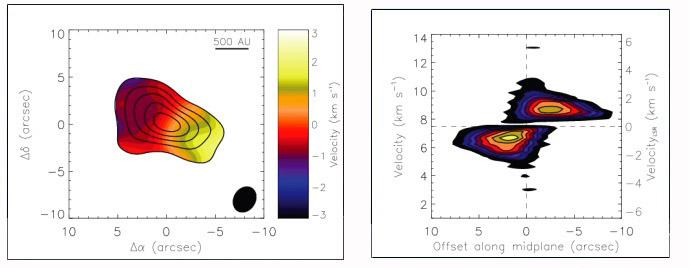 |
|
|
|
SMA Research in Low Mass Star Formation
| |||||||
|
Disks and the Environment Immediately Around Protostar
Single dish telescopes cannot separate disk and envelope emission around protostars, but the SMA is uniquely well equipped to probe the warm dense gas and dust in these regions. Key results include (a) the first surveys of disk masses and properties in a significant sample of embedded protostars at different stages of evolution (Jorgensen et al. 2007, 2009); (b) the unexpected realization that these disks are already substantial at an early phase (Jorgensen et al. 2007, 2009); (c) the identification of Keplerian rotation in some of the more evolved protostars, allowing the central mass to be constrained for the first time (Brinch et al. 2007 (figure 1); Lommen et al. 2008; Jorgensen et al. 2009); and (d) the observation of both infall and rotational motions in the youngest systems (Lee et al. 2006, 2009; Takakuwa et al. 2007; Brinch et al. 2009). In some systems, the disks have been well resolved (Brinch et al. 2007; Wolf et al. 2008).
Resolved observations have also shown that the so-called hot corino emission is mostly due to outflow shocks close to the protostars, although warm disk emission has also been suggested (Chandler et al. 2005; Jorgensen et al. 2005).
| |||||||
|
|

